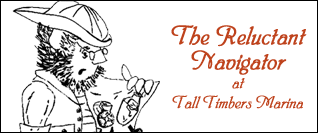25 Million Oysters and Counting
By Sarah Miller, St. Mary's County Times
HOLLYWOOD, Md.—In recent years, local watermen are making an effort maintain their livelihoods and improve the health of the Chesapeake Bay and associated waterways. Moving forward, there are efforts to allow them to continue making a living and to promote additional aquaculture in the area.
Why Oysters?
The focus shouldn’t be only on the health of the bay, said Morgan State University Patuxent Environmental and Aquatic Research Laboratory (PEARL) Director Kelton Clark. That would be similar to saying it’s someone’s fault for being sick when they have a fever. Instead, people need to think about what they can do to improve the health of the watershed and tributaries into the Chesapeake.
The cleanup will take millions of dollars, Clark said, and the money is difficult to come by. The focus needs to be on finding marketbased solutions to environmental problems, specifically encouraging local watermen to be involved in aquaculture.
“If you want to save the bay, eat Tommy (Zinn)’s oysters,” Clark said.
While in the water, seeded oysters will filter water and breed like any other oyster. And the harvest is always incomplete, meaning the oyster population will continue to rise, he said.
Nobody has a Save the Corn or a Save the Soybeans campaign because industries plant them and it’s less likely there will be a shortage. Local watermen have been doing something similar with oysters, Clark said.
In the past, the state would declare a threeyear preserve, plant oysters there, and when the moratorium was over they would allow watermen to come harvest the preserve. This was an unsustainable model, Clark said. It was only minimally successful in helping the oyster population to recover and kept the watermen dependent on the state for their livelihood. The watermen needed to become entrepreneurs, he said.
There are a couple methods for planting oysters, said Southern Maryland Shellfish Growers Association President and Shore Thing Shellfish Partner Brian Russell. Oyster farmers can take out a bottom lease, meaning they can only plant spat on shell on the bottom and harvest them using a dredger or tongs. Another method involved taking out a water column lease, meaning watermen can use cages and keep the oysters off the bottom, which makes a difference in the size and shape of oysters. Another factor that can make a difference is the type of oysters seeded, Russell said. Some grow faster than others.
Farm raised oysters in general tend to be more marketable to the half shell market, said Calvert County Watermen’s Association President Tommy Zinn. They’re typically larger and more regularly shaped.
Additionally, cage raised oysters can be kept safe from predators and recovered more easily, Clark said.
It’s the responsibility of the state not to compete with the watermen but to support the growing industry by supplying things such as funding and technology, Clark said.
Moving Forward
Since aquaculture efforts began in 2008, there has been an ongoing effort to change local culture and traditions to accommodate new methods, Clark said, and overall the efforts have been successful. Over the years, the industry needs have changed, Clark said. There is a growing need for oyster larvae, and possibly additional hatcheries in the state.
Researchers at PEARL are making efforts to find alternative materials to put oyster spat on and plant, including construction rubble.
“Oyster shell is a hot commodity in the state,” Russell said, adding that there is not enough supply to meet demand.
Currently, there is only one hatchery in the state - Horn Point Lab Oyster Hatchery, a publicly funded facility. Because of this, watermen have to go out of the state to ensure they have enough spat on shell to plant for a successful harvest. The hatchery at PEARL will be restarted in late 2015 or early 2016, Clark said, but it’s not a large enough hatchery to support the region. There are discussions to start a type of co-operative hatchery or to determine the feasibility of a private hatchery, but there are no concrete plans right now. PEARL will continue to support aquaculture efforts of all types, Clark said.
Jon Farrington of Johnny Oyster Seed uses the PEARL facility as a host site for a project with the Calvert Watermen’s Association to seed 25 million oysters to plant in the region.
An additional challenge facing oyster farmers is the amount of time it gets to secure a lease.
“The Army Corps has been reluctant to give any leeway to the state, which is unfortunate,” Russell said.
He hopes in coming years, there will be strides to streamline processes to secure leased property for planting and harvesting oysters.
Oyster season on public bars is Oct. 1 through March 31. Private growers benefit most during the April 1 through Sept. 30, Zinn said. Moving forward, Zinn believes when grants and public funding dries up, it will become more difficult for watermen to turn a profit by farming oysters. There will need to be changes made to keep oyster farming profitable, he said.
There has been a learning curve at every step. Each lease site is different, Russell said, and when watermen started oyster-farming efforts they believed they could plant the oysters, return in three years, and harvest them. The yield turned out to be smaller than expected during the first harvest, Russell said.
“There’s a lot of manpower involved,” Zinn said.


